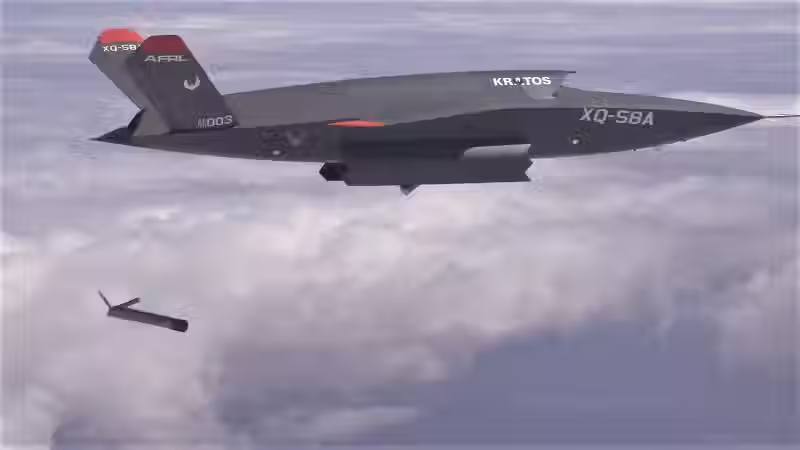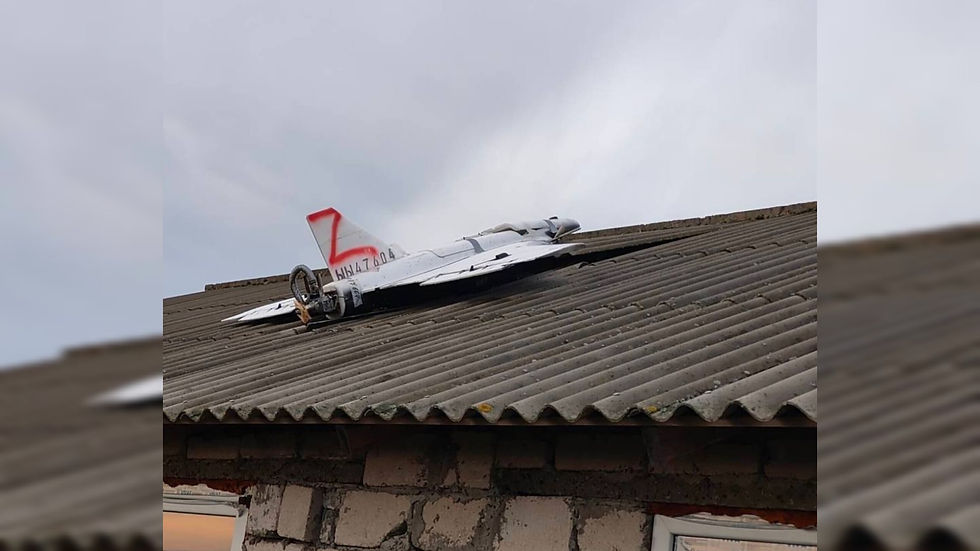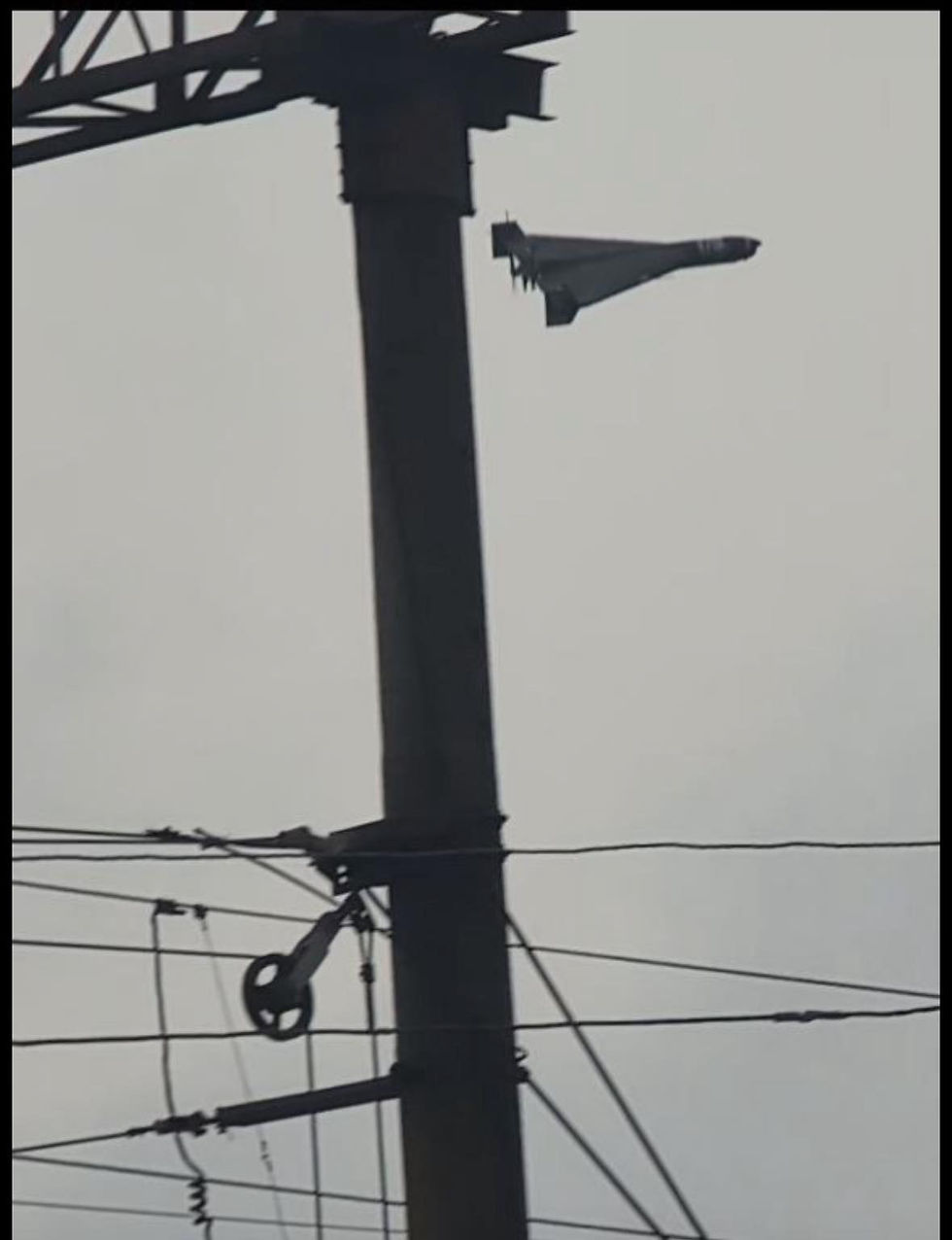Everyone Needs Loyal Wingmen — A US-European Bargain
- Res Publica

- Aug 18
- 4 min read
A quickfire series of agreements are blazing a trail for future transatlantic defense cooperation.

The XQ-58A Valkyrie first flew on 5 March 2019 and has since completed further test flights. Source: Kratos
Multiple US defense firms have in recent weeks announced partnerships with European companies to jointly develop and produce “European versions” of US-developed drone aircraft.
These are high-end tech products far removed from the often-basic drones used in the Ukraine war. Collaborative Combat Aircraft (CCA) — AI-powered, jet-propelled drones also known as loyal wingmen — are designed to operate autonomously or alongside manned fighter jets to multiply their effectiveness, and to execute a wide range of tasks at lower risk and lower cost.
These vehicles are far cheaper than crewed alternatives, and their destruction causes no loss of life, offering clear human and economic incentives to what has become a worldwide trend. But cost savings alone are not the main motivating factor. Political and strategic considerations also play a significant role. If this chapter of transatlantic cooperation succeeds, providing Europe with high-end technology and the US with a huge market, it could pave the way for close collaboration on a range of other systems as Europe undertakes an enormous rearmament program. Such a development could provide a grand bargain for both sides and re-center the North Atlantic relationship.
In June, the US firm Anduril and Germany’s Rheinmetall signed a comprehensive partnership agreement that, among other provisions, includes the integration of a European variant of the YFQ-44 Fury (Anduril’s autonomous air vehicle designed to operate within manned-unmanned teams) into Rheinmetall’s digital sovereignty framework, known as Battlesuite. This integration will enable single countries to tailor command systems and operational concepts to the needs of their air forces.
A few weeks later, similar developments emerged involving other major US aerospace and defense firms. General Atomics announced that it will link its German subsidiary, General Atomics Aerotec Systems GmbH, in a “teamed operation” to develop and produce a variant of its YFQ-42 CCA specifically for European militaries.
Around the same time, US startup Kratos Defense & Security Solutions announced a partnership with the European aerospace giant Airbus. The agreement aims to deliver, by 2029, a customized version of the XQ-58A Valkyrie CCA to the German Air Force (Luftwaffe), equipped with Airbus’s mission system.
It is not difficult to understand the reasons behind the renewed interest of US defense companies in Europe. The combination of a powerful push for rearmament, underlined by increased defense spending commitments made by NATO members during June’s summit in The Hague, is triggering a massive flow of investment across the continent, much of which is expected to follow the “Buy European” principle.
Faced with such a significant opportunity, US companies are leveraging their technological know-how to position themselves as key stakeholders in Europe’s defense modernization process, thus gaining access to what seems a lucrative opportunity. On the other side, Europe is simply unable to produce much of the equipment and infrastructure needed in the timescale required.
Not by chance, when officially unveiling its European initiative, Anduril emphasized that the product being offered to European clients incorporates lessons learned from its involvement in the US Air Force’s CCA program, highlighting the strategic value of the know-how it brings to the European defense ecosystem.
Similarly, General Atomics stressed that its efforts, along with those of other companies, to promote and export its CCA to European partners have received support from the US Air Force. These words suggest a broader institutional endorsement of this “industrial pivot to Europe”, where the sharing of advanced technologies with European firms and defense apparatus forms a key pillar of all these bilateral engagements.
The political and strategic rationale appears evident, and it extends beyond a simple message of trust and long-term commitment, as signaled by the sharing of cutting-edge technologies with allies. This approach is in fact capable of producing a beneficial outcome on both sides of the Atlantic.
The announced wave of defense investments in Europe is not limited to short-term objectives, such as quantitatively boosting the arsenals of European armed forces, but also aims to build a resilient and technologically advanced European military-industrial base. Granting early access to disruptive technologies like CCAs allows Europeans to begin adapting their defense-industrial systems, while avoiding the high costs of the initial R&D stages already borne by US companies. At the same time, by gaining access to a promising and expanding European market, US firms can secure additional revenue that can be reinvested in further development and refinement of their technologies.
For now, this new pattern of US-EU cooperation in the defense sector remains largely aspirational, substantiated primarily through corporate announcements and strategic intent.
Yet it reflects a growing recognition on both sides of the Atlantic that future security challenges will require not only greater transatlantic alignment but also the structural strengthening of Europe’s own defense-industrial capabilities.
If successfully implemented, this model could serve as a blueprint for broader cooperation in high-end defense innovation, moving beyond contingency-driven responses and instead laying the foundations for a bigger and better-rooted European defense.
In doing so, it would not only deliver shared operational and economic benefits but also contribute meaningfully to a more balanced and robust Atlantic alliance, fit to face an era defined by renewed geopolitical rivalry and systemic confrontation.
By Lorenzo Piccioli. Lorenzo Piccioli is a security and defense analyst working for the Italian outlet Formiche. His research interests focus on conflict analysis, military innovation, and great-power competition. Article and pictures first time published on CEPA web page. Prepared for publication by volunteers from the Res Publica - The Center for Civil Resistance.





Comments